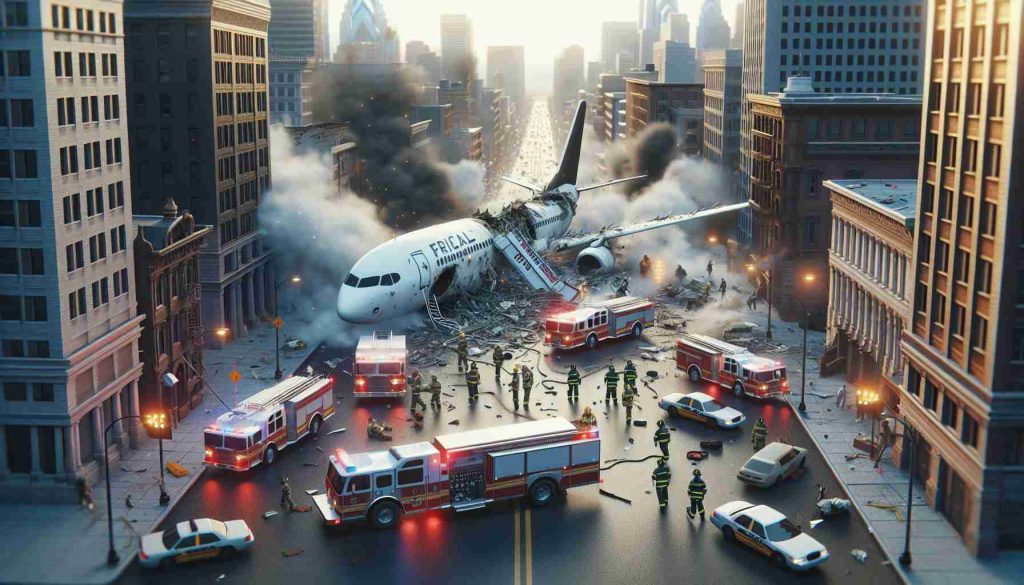“`html
- The plane crash in Philadelphia has raised urgent questions about aviation safety protocols.
- Investigators are working meticulously to determine the cause by examining flight data and eyewitness accounts.
- Former air traffic controllers underline the importance of quick decision-making in preventing disasters.
- The incident may lead to substantial changes in safety measures for future flights.
- Technological advancements such as AI and enhanced training are crucial in improving safety.
- The aviation community emphasizes the necessity of transparency and accountability in air travel safety.
“`
In the aftermath of a shocking plane crash in Philadelphia, the aviation world is on high alert, questioning existing safety protocols and procedures. Investigators are diligently piecing together the incident, gathering evidence ranging from detailed flight data to eyewitness accounts. Each element of this meticulous process is crucial, as it seeks to unravel the mystery behind the tragedy.
Former air traffic controllers emphasize the role of swift decision-making in averting disasters, highlighting how every second can tip the scales between life and death. Their insights serve as a stark reminder of the high stakes involved in aviation, urging for accountability and thorough scrutiny not just of the crash’s circumstances, but of aviation safety policies as a whole.
The Philadelphia community, rocked by the news, remains watchful, understanding the broader implications of the investigation. The potential findings could prompt significant changes in how safety measures are implemented for future flights, ensuring that every journey through the skies is as secure as possible.
Technological innovation plays a pivotal role in advancing aviation safety. From cutting-edge flight data monitoring systems to AI-driven predictive analytics and enhanced pilot training, these developments underscore a committed drive towards preventing future incidents.
As updates continue to emerge, one takeaway stands clear: the pressing need for improved safety and transparency in air travel cannot be overstated. Each flight matters, and the hope for safer skies lies in learning from past incidents to craft a future that prioritizes passenger and crew safety above all else. Stay tuned as the story unfolds, potentially reshaping aviation safety standards for years to come.
This Controversial Aviation Incident Could Revolutionize Flight Safety Standards—Here’s Why
The Aftermath of the Philadelphia Plane Crash: What You Need to Know
In the wake of a devastating plane crash in Philadelphia, the spotlight is firmly on aviation safety. Investigators are busy with a detailed analysis, employing cutting-edge techniques to gather every shred of evidence, from black box data to passenger testimonies. This meticulous approach aims to demystify the tragedy and possibly pave the way for regulatory changes to enhance future safety measures.
Technological Advancements in Aviation Safety
Recent innovations in aviation technology focus heavily on prevention. Advanced flight data monitoring systems, AI-driven predictive analytics, and comprehensive pilot training programs are at the forefront, all designed to minimize human error and mechanical failures. These innovations symbolize a determined commitment to safer skies.
The Community’s Demand for Transparency
The Philadelphia community, still reeling from the tragedy, is demanding greater transparency in the investigation. The outcome could catalyze new safety measures and policy reforms, potentially affecting how future flights are secured and monitored. This tragedy boldly underscores the urgent necessity for improvements in aviation safety protocols.
Investigating Key Questions
1. What new technologies are being developed to prevent aviation disasters?
Recent advancements in aviation technology include AI-driven predictive analytics that help anticipate potential failures before they happen, as well as improved real-time flight data monitoring systems. These technologies can significantly reduce the likelihood of accidents by offering preemptive solutions.
2. How could the findings from the Philadelphia crash impact future aviation regulations?
The findings could potentially lead to stricter safety measures and changes in crew training protocols. Additional regulations could include incorporating more advanced technology in pilots’ training simulators and enforcing stricter maintenance schedules for aging aircraft.
3. What are the broader implications for global aviation safety?
Globally, there is a renewed focus on harmonizing aviation safety standards. The incident could drive international organizations to reassess and tighten safety regulations, fostering a unified approach to risk mitigation across countries.
Suggested Links for More Information
For further insights into aviation safety reforms and technology:
– International Civil Aviation Organization
– Nasa
– Federal Aviation Administration
